Lawn Pests in florida
Pest Library
Lawn Pests in South Florida
Fire Ants
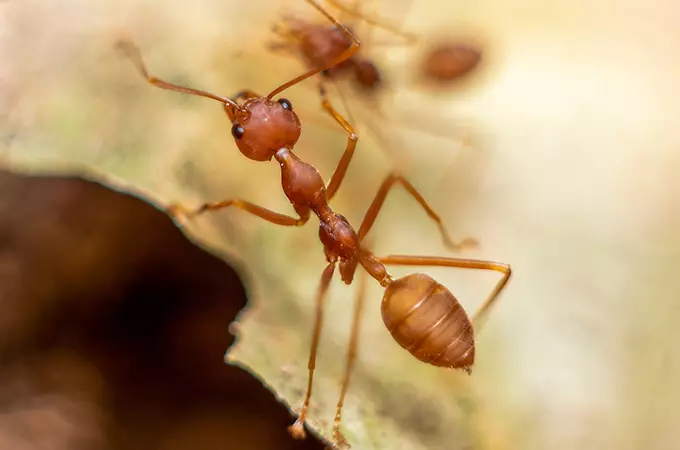
What Do Fire Ants Look Like?
Fire ant colonies contain workers of different sizes ranging from 1/8-inch to 1/4-inch in length. They are generally uniform in color and are dark brown to red. In South Florida, fire ants are active all year long and swarm several times a year between spring and fall. South Florida makes the perfect habitat, as they are attracted to warm, humid environments with annual rainfall of 10 inches or more. They eat fruit, sugar, syrups, grease, meat, other lipids, and other insects.
Signs of a Fire Ant Infestation
To spot a fire ant infestation, you’ll want to look first for the recognizable dome-shaped mound they create in the ground. Second, you’ll want to look for the protective behavior of worker ants that pour out of disturbed mounds to attack and string intruders.
Fire ants can pose a significant threat to people, pets, and other animals that unknowingly disturb their mounds and are quickly covered with stinging ants. Their venom causes allergic reactions that sometimes result in serious illness or death.
Moles
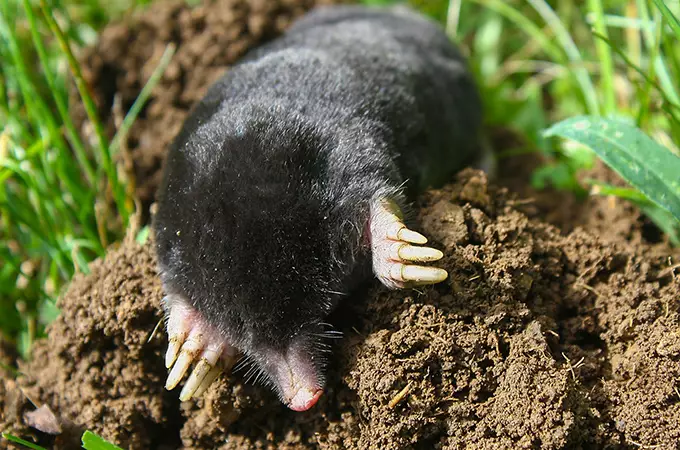
What Do Moles Look Like?
Moles are mammals and have rounded bodies 6 inches in length. They are covered in soft black or gray fur and have pointed muzzles. Their tiny eyes are sensitive to changes in light level but provide little visual acuity. Moles have short, powerful legs and extremely broad front feet, which are used as shovels and are equipped with enormous digging claws. Moles are active year-round in South Florida.
Signs of a Mole Infestation
Moles feed on grubs, so if your lawn has been infested with those, you can expect moles to show up. Moles burrow through lawns and create molehills, which can kill a lawn. They can also burrow through plant roots, causing root damage and leading to death of the plant. In addition, moles can also bring other pests with them, such as fleas and ticks.
Grubs
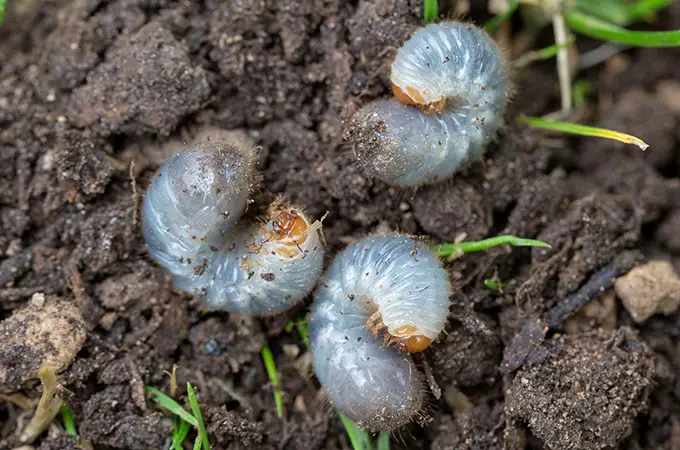
What Do Grubs Look Like?
Grubs are 1/4-inch to 2 inches, depending on their age. They are creamy white and C-shaped with tan heads and six legs. In South Florida, grubs are a year-round pest. Their larvae hatch in May and June.
Signs of a Grub Infestation
Grubs damage lawns quickly and extensively by feeding on the roots of turf grass. You can spot a grub infestation by looking for thin, yellow patches of grass that eventually die due to the damage to the root systems. The turf will feel soft and spongy in damaged areas, and scattered brown patches in the grass will appear.
Chinch Bugs
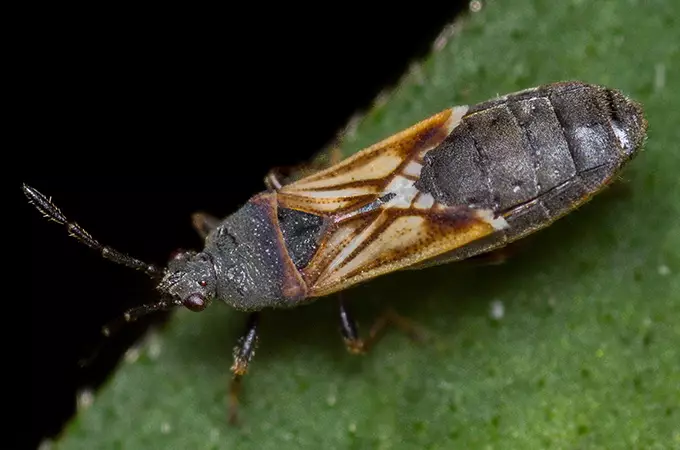
What Do Chinch Bugs Look Like?
Chinch bugs are 1/10-inch to 1/8-inch long. They have black bodies and white, shiny wings that fold on their backs. In South Florida, these bugs are active all year long.
Signs of a Chinch Bug Infestation
While chinch bugs don’t pose a threat to the health or safety of humans or animals, they do pose a threat to your lawn. They are piercing, sucking insects that suck the juice out of turf grass while injecting a toxin that kills the grass. St. Augustine grass is particularly susceptible to chinch bugs.
Fall Army Worms
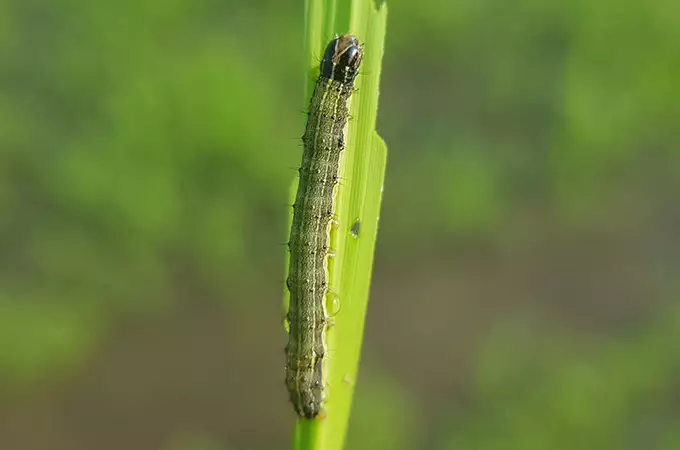
What Do Fall Army Worms Look Like?
Fall army worms, a type of moth caterpillar, are 1 to 2 inches long and about the width of a #2 pencil when fully grown. They are light tan to shades of gray or green. The head is usually shiny black or brown, with a prominent yellow or white inverted “Y” marking on the front. The body has stripes and many black, round, mole-like structures. Typically, these lawn pests are active spring to fall, with activity peaking June through September.
Signs of a Fall Army Worm Infestation
When the fall army worms eggs hatch on the underside of the leaves where they’ve been laid, the larvae feed on the plants and grass close to their hatch area. The larvae pose a particular problem for St. Augustine grasses.
Adult fall army worms are swift movers and voracious eaters, stripping a shrub overnight if they move in large numbers. Their damage is equally extensive to grass as they strip the grass blades completely.
Sod Web Worms
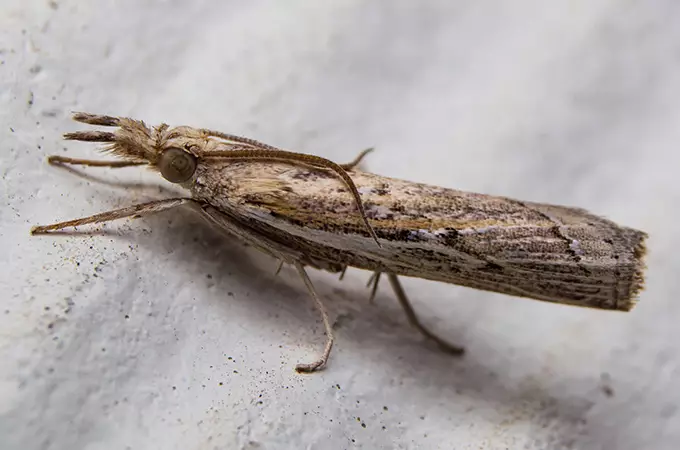
What Do Sod Web Worms Look Like?
Sod web worms, a type of moth caterpillar, grow to nearly 3/4-inch long and vary in color, from pinkish-white to yellowish-brown with a light to dark brown or black head. These pests are covered in fine hairs and are most active during the spring and fall months.
Sod web worms love to rest in shrubbery during daylight hours and fly over the grass in early evening, depositing eggs on the lawn as they fly. Grasses, plants, golf courses, and ornamental turf are particularly prone to sod web worm infestations.
Signs of a Sod Web Worm Infestation
You can spot an infestation by looking for brown spots and raggedly chewed grass blades. Large areas of grass may be damaged severely in a matter of days.